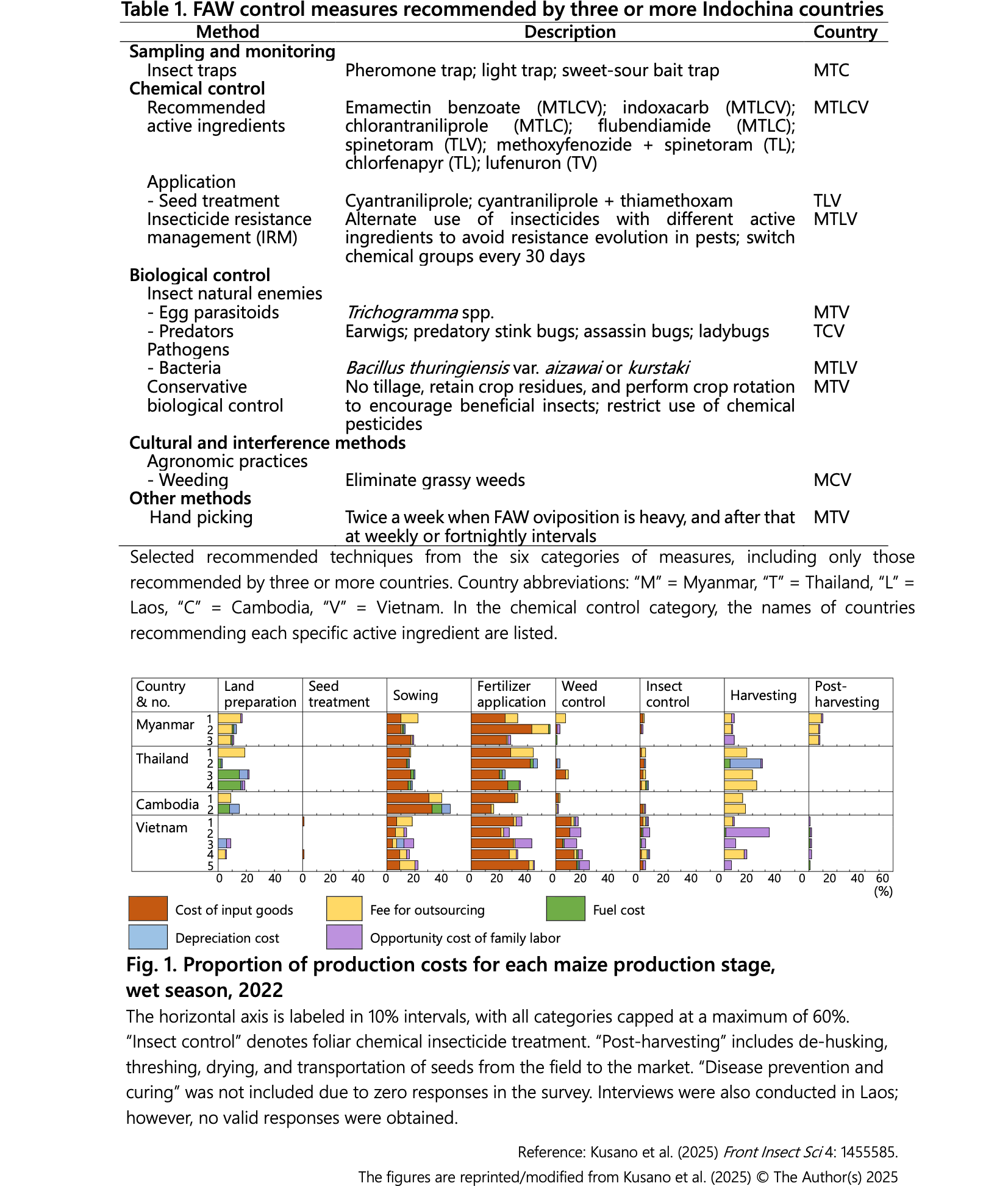Organization and cost requirements of government-recommended fall armyworm control measures in Indochina countries
Description
The fall armyworm (FAW), Spodoptera frugiperda, a polyphagous pest native to the Americas and known for causing significant damage to maize crops, was first detected in West Africa in 2016 and was reported in Southeast Asia by 2019. However, there is still room for a systematic organization of information on the FAW management strategies of ASEAN governments, including their feasibility for adoption at the farm level. This study categorizes FAW control measures recommended by governments and assesses their alignment with practices adopted by farmers in the Indochina region, including Myanmar, Thailand, Laos, Cambodia, and Vietnam. The findings aim to provide critical insights to support the development and dissemination of integrated pest management (IPM)-oriented FAW control technologies.
FAW control measures promoted by governments for farmers include brochures, websites, and social media in local languages. While many countries recommended chemical pesticides such as emamectin benzoate, concerns about resistance have led to the promotion of resistance management and biological controls, including microbial agents and natural enemies (Table 1). A survey of 127 feed maize farmers in Thailand in September 2021 revealed that foliar application of chemical pesticides was the dominant FAW control method, with no farmers reporting the use of seed treatments or natural enemies. From October 2022 to March 2023, interviews with 14 feed maize farmers in the Indochina region were conducted to analyze production costs for individual operations. Across various countries, pest prevention and control costs, including application and opportunity costs, accounted for less than 5% of total production costs for most farmers (Fig. 1). The foliar application of emamectin benzoate was prevalent, with material costs averaging $9/ha and application costs $5/ha, indicating relatively low expenses.
To encourage the adoption of chemical insecticide alternatives recommended by national governments, their costs must not become significantly higher than those of foliar applications of emamectin benzoate. According to our survey results and prior studies, seed treatments and the release of natural enemies show potential as cost-effective measures, warranting further investigation. However, the limited sample size of farmer interviews in this study highlights the need for broader surveys to draw more generalizable conclusions, particularly regarding specific figures such as the cost of emamectin benzoate.
Figure, table
- Research project
- Program name
- Term of research
-
FY2021-2024
- Responsible researcher
-
Kusano Eiichi ( Social Sciences Division )
Kobori Youichi ( Crop, Livestock and Environment Division )
- ほか
- Publication, etc.
-
Kusano et al. (2025) Front Insect Sci. 4: 1455585.https://doi.org/10.3389/finsc.2024.145558
- Japanese PDF
-
2024_B04_ja.pdf1 MB
- English PDF
-
2024_B04_en.pdf158.35 KB
* Affiliation at the time of implementation of the study.

